 [In February of 2000 I received an unexpected invitation to write and deliver the keynote address to the annual World Press Photo Awards Days upcoming that April in Amsterdam.
[In February of 2000 I received an unexpected invitation to write and deliver the keynote address to the annual World Press Photo Awards Days upcoming that April in Amsterdam.
While I consider press photography and photojournalism — along with documentary photography — to fall within my purview, and had written about all three of those periodically over the years, I hadn’t engaged with the organizations that support professional press photography and photojournalism — WPP, the American Society of Media Photographers, the National Press Photographers Association. So the request came out of the blue.
Up to that point, I hadn’t even reviewed any of the touring WPP exhibitions that the organization creates from the work that it selects and celebrates at its annual gatherings in The Netherlands, none of which I’d attended. (Click here for my review of the 2012 edition of this show.) And I couldn’t imagine that most people in those fields had more than a passing acquaintance with my work, so I doubted that my name had much marketing value in those circles. (For more of the backstory, see this post from June 2009.)
Nonetheless, I’d given the subject a lot of thought over the previous decades, while watching closely in the 1990s as digital imaging and the internet transformed both the toolkit used by practitioners of these related forms and the infrastructure and superstructure of the distribution system through which their work reached the public. Because I taught in an undergraduate studio photography program at New York University from the late 1970s through the early ’90s, I had directly experienced the shift in photo education from analog to digital systems.
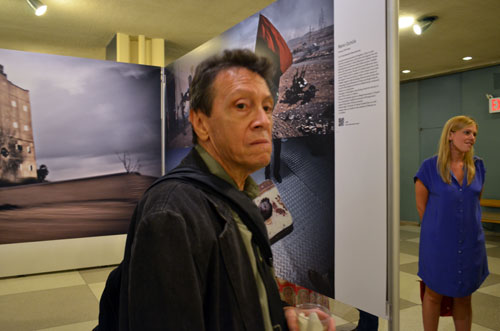
A. D. Coleman looking skeptical, World Press Photo opening, UN, NY, 8-15-12. Photo © copyright by Anna Lung.
Also, as someone who talked regularly not only with students and teachers but with professionals in these disciplines — photographers, picture editors, book and magazine and web publishers — while keeping an ear to the ground and an eye on the evolving technology, I thought that by weaving all of that together from my outsider’s perspective I might generate something provocative and engaging for the WPP audience. So I accepted the commission and set to work.
Looking back at any prophecy 20 years on has a humbling effect. Technologies we all considered cutting-edge at the time have become historical artifacts, quickly slipping into obsolescence. Tools and working methods I couldn’t anticipate shifted trajectories. Economic forces revised many assumptions.
So consider this a time capsule, as well as a period piece. Still, I hope that at least is makes for interesting reading, as you discover where I missed the mark and where I scored a bull’s-eye.
Part 1 appears below. Click here for Part 2. You can download a PDF file of the complete text here. — A.D.C.]
•
2020 Vision:
Photojournalism’s Next Two Decades
My thanks to the World Press Photo Foundation for this invitation to address you all on this auspicious occasion. Thanks also to Árpád Gerecsey, Marieke Wiegel, and the rest of the foundation’s staff, with whom it’s been a pleasure to work. And my thanks to Grazia Neri and Robert Pledge, who I believe first put my name into the hat as a candidate for the task of providing a keynote address that’s appropriate for this moment — the last World Press Photo Awards ceremony of the twentieth century, and also the final one of the second millennium of the Common Era. I hope to justify Grazia’s and Robert’s confidence, and that of the others who approved this choice.
![]() I should add that none of them made any suggestions regarding what I should speak about, and none of them have any idea of what I’m about to say. You could argue that this absolves them of any accountability for what’s going to happen. But, at least since the middle 1970s, anyone who’s invited me to speak has had good reason to believe that I’d most likely make trouble in one way or another on such an occasion and, tacitly or actively, has encouraged me to do so simply by providing me with a forum. So I take full responsibility for the consequences of what I’m going to say today; but, if I were you, I wouldn’t let them off the hook entirely. They knew what they were doing, and don’t let them tell you otherwise.
I should add that none of them made any suggestions regarding what I should speak about, and none of them have any idea of what I’m about to say. You could argue that this absolves them of any accountability for what’s going to happen. But, at least since the middle 1970s, anyone who’s invited me to speak has had good reason to believe that I’d most likely make trouble in one way or another on such an occasion and, tacitly or actively, has encouraged me to do so simply by providing me with a forum. So I take full responsibility for the consequences of what I’m going to say today; but, if I were you, I wouldn’t let them off the hook entirely. They knew what they were doing, and don’t let them tell you otherwise.
•
Just about everybody in this room spends their working lives, and much of their spare time, looking at photographs. And we’re going to pass most of the next two days doing that together. So I’m declaring the next 45 minutes to be a mini-vacation for the eyes of all of us, a picture-free zone. My motives are partly selfish: you’ve just had lunch, and we all know what most of you will do if we turn out the lights. Aside from which, looking at pictures and thinking about imagery are in any case two different activities, taking place on opposite sides of the brain. So I’ll give your eyes a rest, in the hope of engaging your minds.
•
Less than nine months from now, we will begin to speak routinely of 21st-century photography, and to distinguish it from what preceded it. Those of you here who are working photographers — and working picture editors, publishers, and others in the field — will be instantly and effortlessly transformed into transitional figures when the odometer turns over on January 1st, 2001: you’ll become picture professionals whose working lives straddle not just two centuries but two millennia. (Same goes for me, by the way; and much of what I’ll present to you today pertains of course to everyone in all branches of the medium of photography.) I don’t say this to make any of us feel old, though hearing yourself referred to by some whippersnapper as a leftover from the twentieth century will probably irritate you as much as it offends me to hear the Rolling Stones sneeringly described as a geezer band.
This points up a few elementary facts: Simply because we operate with a base-10 mathematics (which probably originates from counting on our fingers), the number 100 has a definite, deep resonance for us; centuries, and the moments of passage from one to another, are therefore milestones.
Come next January 1st, the major figures from the field’s not-so-distant past who are reference points and even former colleagues and personal acquaintances for some of you but who have died or at least largely finished their work at this point — W. Eugene Smith, Margaret Bourke-White, Stefan Lorant, Larry Burrows, Howard Chapnick, Don McCullin, Giséle Freund, Henri Cartier-Bresson, to name just a few — will immediately and irrevocably fall into the history of twentieth-century photography. By the same token, those who began their work very recently, or who will first enter the field next New Year’s Day or thereafter, will automatically and by definition be considered 21st-century figures.
And those of you who started your work anywhere further back during the past half-century — before the early ’90s, let’s say — and are still at it will find yourselves in a curious and probably uncomfortable situation. Conceivably you’ll hold positions of considerable authority and clout; quite possibly you’ll be at the height of your powers, full of the experience and expertise drawn from watching these fields shape and reshape themselves. Yet you’ll be viewed by 21st-century newcomers as historical figures who are, by their lights, old and in the way.
In short, at the stroke of midnight next December 31st you’ll turn into not pumpkins but rather the geezers of what, for convenience’s sake, I’m going to call photojournalism, but which I think of more broadly as informationally oriented photography: the related and often overlapping forms of documentary photography, photojournalism and press photography. And you geezers will have to prove your relevance all over again, or else face the likelihood of living well into the next century while listening to others relegate your significance and vitality and influence to this one just now ending.
That’s the way the turn of the century goes in western culture, at least if the early 1800s and 1900s serve as any model. You don’t have to like it, but you’d better get used to it. And the best way of doing so, I propose, is to get a running start on this changeover by beginning to talk — right now, today, this very minute — about 21st-century photography, with the recognition that, whatever you may feel about the medium as you’ve known it so far, that was then, and this is now.
•
Imagine yourself fast-forwarded and plunked down — as you will shortly be, de facto — at the very beginning of 21st-century photography. Wave goodbye to the past; look at the present and toward the immediate future. What do you see between now and the year 2020 — a time frame during which, I’d assume, most of those here this afternoon expect to continue to live active professional lives?
To start with, even if your work involves making pictures, you may no longer appropriately find yourself called a photographer. There are several reasons for this possible shift in nomenclature. One is that the tools of your trade have changed considerably. Twentieth-century photographers were people who exclusively used dedicated still cameras to make static images of their subjects. But the new digital technologies already provide you with cameras that offer you the option of switching from still to kinetic imagery with the flick of a button, adding sound captions and text captions to your still imagery, recording live sound with your kinetic imagery. Whatever that is, it ain’t exactly photography.
Some of you will continue to restrict yourselves to making still images; you may even opt to work exclusively with analog equipment, if your clients and employers are willing to put up with the increasing inconvenience of handling analog output. And, in that case, you may reasonably continue to call yourselves photographers. Others of you will accept, and possibly even embrace, the remarkable options offered by the new tools.
Some of you have already done so; the last time I saw the venerable Fred Baldwin, co-founder of Houston FotoFest and a photojournalist himself, he was using his still/video digicam to make stills and video clips from FotoFest 2000 to upload to the festival’s website. If that savvy old dog can learn a new trick, so can you. The students coming out of media arts programs and photojournalism programs today — the first generation of picture-makers in 21st-century photography — already have hands-on experience with those tools, and will take their availability for granted. What new term best describes that broadened range of professional activity, which surely goes far beyond what we used to call photography and photojournalism?
On another level of nomenclature, you’ll find yourselves now commonly referred to in other contexts as content providers, and as makers of something that’s known as intellectual property. You’ll also discover that these terms aren’t restricted in usage to the field of photography; indeed, they apply to graphic artists, musicians, writers, and other people who work in entirely different media. And what you’ll see when you look around is that independent contractors who provide content by producing intellectual property — which is what the free-lancers among you do for a living — are making common cause in all media.
•
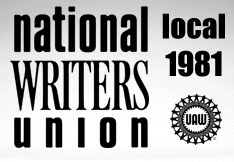 In that regard, next January 1st, you’ll have good reason to celebrate. Indeed, you can do so in advance, right here and now: earlier this very week, I’m pleased to inform you, the U.S. Court of Appeals unanimously upheld a lower court’s landmark ruling on electronic rights in a case brought by freelance writers, the precedent-setting lawsuit known as Tasini et al v. the New York Times et al, or more commonly as Tasini v. the New York Times. The three-judge panel’s unequivocal decision, handed down last fall, specified that it is copyright infringement for a publisher to put any freelancer’s work online or otherwise reuse or resell it without explicit written permission. With the appeal for a rehearing denied, that decision now stands as the law of the land.
In that regard, next January 1st, you’ll have good reason to celebrate. Indeed, you can do so in advance, right here and now: earlier this very week, I’m pleased to inform you, the U.S. Court of Appeals unanimously upheld a lower court’s landmark ruling on electronic rights in a case brought by freelance writers, the precedent-setting lawsuit known as Tasini et al v. the New York Times et al, or more commonly as Tasini v. the New York Times. The three-judge panel’s unequivocal decision, handed down last fall, specified that it is copyright infringement for a publisher to put any freelancer’s work online or otherwise reuse or resell it without explicit written permission. With the appeal for a rehearing denied, that decision now stands as the law of the land.
It’s retroactive, by the way, so the serial rights-infringers of U.S. publishing will now have to pay through the nose for their piracies over the last several decades. The legal systems of some other countries have already made comparable determinations, and many more will surely follow suit. As a founding member of the National Writers Union, which largely subsidized this suit, I take great pride in announcing this victory to you. By the way, the N.W.U. is an affiliate of the United Auto Workers, which also endorsed this lawsuit — as did other professional writers’ organizations, and also the American Society of Media Photographers, which recognized its pertinence to the concerns of photographers. So there’s no shortage of new allies in the struggle of content providers to curb the global corporate culture’s attempts to steal the long-term benefits of our work out from under us.
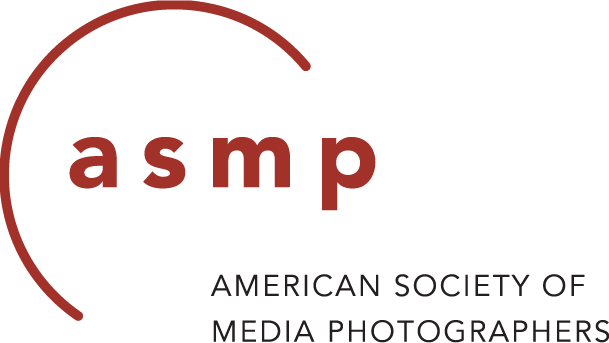 That’s the good news for those of us who function as content providers and makers of intellectual property, and who refuse to sell our birthright for a mess of pottage. The bad news is that this won’t stop the predatory behavior of those who seek to profit unduly from our labors: publishers and their enforcers — the lawyers who draw up the contracts hostile to our survival, and the editors who attempt to wheedle or bully us into signing them. They’re already busily working to circumvent the spirit of the copyright law, and of this new decision, by pressing us to endorse highly unfavorable contracts that define our content production as work made for hire, or otherwise insisting that we transfer to them copyright and all other rights to the intellectual property we generate and on which so many 21st-century growth industries depend.
That’s the good news for those of us who function as content providers and makers of intellectual property, and who refuse to sell our birthright for a mess of pottage. The bad news is that this won’t stop the predatory behavior of those who seek to profit unduly from our labors: publishers and their enforcers — the lawyers who draw up the contracts hostile to our survival, and the editors who attempt to wheedle or bully us into signing them. They’re already busily working to circumvent the spirit of the copyright law, and of this new decision, by pressing us to endorse highly unfavorable contracts that define our content production as work made for hire, or otherwise insisting that we transfer to them copyright and all other rights to the intellectual property we generate and on which so many 21st-century growth industries depend.
Sniff the air and you can smell their fear and desperation. Their stranglehold on content providers is being loosened, finger by finger. Not only will the publishers and online distribution systems now have to pony up fortunes to those whose rights they’ve violated for years, but content providers in the States and elsewhere — at least those who’ve been courageous and savvy enough to retain their rights to their work — now have formal protection for all those rights, including electronic usages. Not only do they have the courts explicitly on their side at last, but they also have increasingly good reason to hang on to all of their rights to their original work: there’s gold in them thar hills, and the publishing industry knows it. Why else do you think they fought this ruling so long and hard? Why are they now bitterly whining in chorus about what a terrible blow this is to them?
After all, it’s the job of CEOs, middle management, and highly paid corporate lawyers to smell potential windfall profits and do everything possible to grab up the sources thereof. And they don’t have your best interests at heart, ever; you can be damn well sure that if they’re after any of your rights it’s because the scent of cash has made their nostrils twitch. So don’t depend on your own noses, which you probably haven’t educated to sniff out the big bucks; use the people who come asking for your rights as if they were trained pigs after truffles, and trust their noses instead. If they want something from you, it’s a likely sign that it’ll be worth plenty somewhere down the line.
Remember, above all, that it’s not your job to make them happy — especially because, in the 21st century, the publishing industry, broadly defined, is facing the same hard truth that the television industry, the radio industry, and the music industry now confront: You no longer need them.
•
In music, bands now produce their own CDs and sell them from their websites, completely eliminating the middleman. Streaming audio and video make it possible for anyone to broadcast live concerts on the Web, free or with admission by subscription, completely eliminating the middleman. The MP3 technology allows musicians to offer digital files of recordings made in a professional studio or a garage directly to listeners over the Internet, free or for a price, completely eliminating the middleman.
Let me repeat those four words, which strike terror to the hearts of capital and management everywhere: completely eliminating the middleman. Up until now, you’ve considered publishers and editors — and perhaps also those who run galleries, museums, bookstores and newspaper kiosks — as necessary evils: the unavoidable gatekeepers through whose portals your work had to pass, the only effective pipeline to your audiences and markets. That’s no longer the case. As in the field of music, so in the fields of imagery and text. For all the multinational conglomeratization that’s gone on over the past two decades, there are now more publishers of books and more publishers of magazines than ever before in history. Digital technologies have opened up major new approaches to publishing and many new forms of publication, bringing with them thousands of new publishers and outlets and distribution methods. And self-publishing has never been a more viable option — technically and economically — than it is today.
The concept of self-publishing for most work done in the three forms I’m considering here — documentary photography, photojournalism, and press photography — has served as a last resort in the case of all three; it has seemed until now only marginally viable for documentary projects, and simply unworkable in relation to photojournalism and press photography. PDF files, CD-ROMs, e-books, websites, print-on-demand systems: presently and imminently, these open doors for makers of informationally oriented imagery that have been closed and locked to all but the well-to-do since photography’s invention. Via these forms and others soon to come, self-publishing — direct content-provider-to-audience marketing and distribution — will prove ever more tempting.
Steadily, over the past three decades, a variety of markets and presentational venues for all kinds of photography — including what I’m loosely defining as photojournalism — have opened up and/or expanded world-wide. More photography books than ever before are being published. New magazines — most of them addressed to targeted readerships — spring up continuously. The gallery-museum circuit displays (and sells) ever more photography, including photojournalism. Non-traditional venues, such as the now-widespread network of international photo festivals, offer increased opportunities for photographic images to reach viewers and markets. And new distribution systems — online stock houses, non-profit image archives like the Center for Creative Photography in Arizona — function as repositories and licensing agents for photographers’ bodies of work.
It seems clear that the conventional outlets and markets will not simply disappear, but instead will reconfigure themselves radically in the coming decades. It’s equally obvious that new and unprecedented forms thereof — e-zines, e-books, websites, CD-ROMs — will offer new opportunities for picture-makers in all the branches of photography. The photographers who will benefit the most from this situation are those who recognize their power and their value as content providers, who study carefully and involve themselves early on with the new technologies, and who fight to retain copyright and subsidiary rights to their intellectual property. …
•
 Special offer: If you want me to either continue pursuing a particular subject or give you a break and (for one post) write on a topic — my choice — other than the current main story, make a donation of $50 via the PayPal widget below, indicating your preference in a note accompanying your donation. I’ll credit you as that new post’s sponsor, and link to a website of your choosing.
Special offer: If you want me to either continue pursuing a particular subject or give you a break and (for one post) write on a topic — my choice — other than the current main story, make a donation of $50 via the PayPal widget below, indicating your preference in a note accompanying your donation. I’ll credit you as that new post’s sponsor, and link to a website of your choosing.
And, as a bonus, I’ll send you a signed copy of my new book, poetic license / poetic justice — published under my full name, Allan Douglass Coleman, which I use for my creative writing.


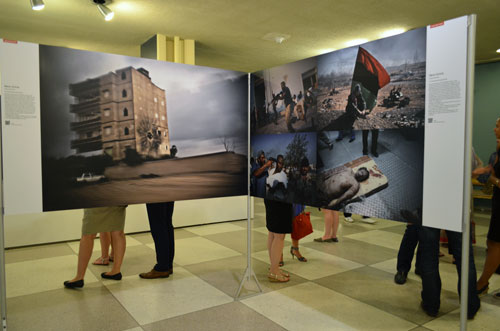
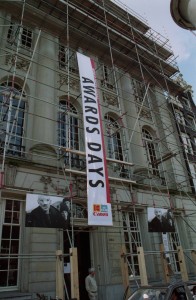
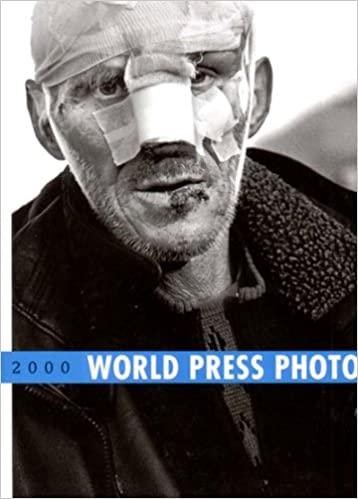




Very prescient.
Too bad the grumbling Kodak execs did not hear you 10 years earlier.
I think Kodak had already reached its tipping point and had begun leaning toward bankruptcy; they (and the rest of us) just didn’t see it. Some corporate version of the saying among wealth advisors that “The first generation makes the money, the second generation spends it, and the third generation squanders it” surely pertains here.
As a postscript, I would certainly consider it ironic if the post-bankruptcy Kodak came roaring back as a result of the recent $756 million government loan to Kodak Pharmaceuticals for making drugs related to the virus.
I had to read the paragraph on using CEOs as truffle pigs out loud to my wife, it was so good.